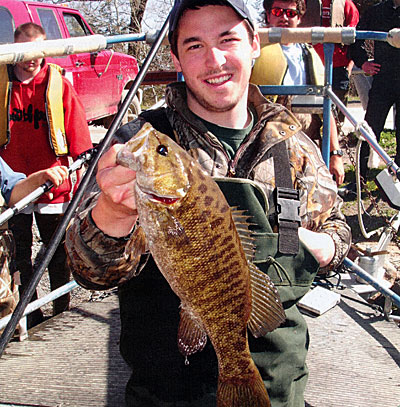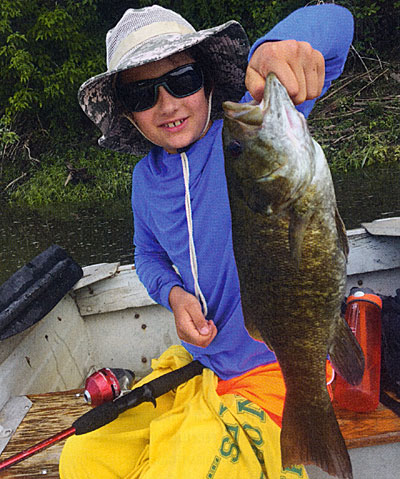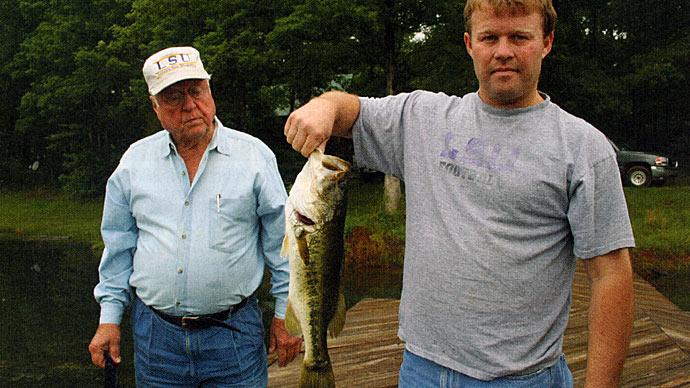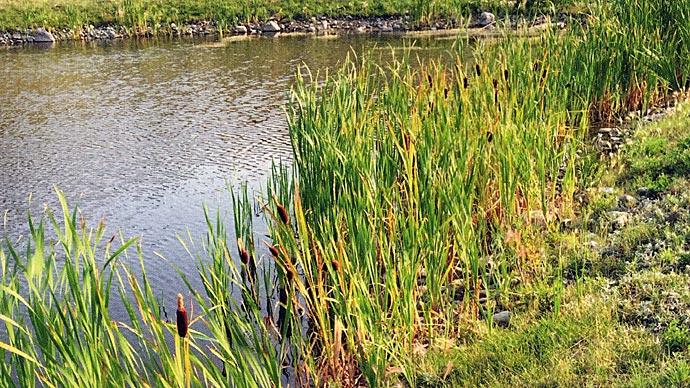
Last weekend, I found myself standing in front of a lake association meeting, composed of a nice (but boisterous!) group of folks whose lake I routinely sample. Half of those attending were avid fisherman who peppered me with questions on how to stock walleye, improve smallmouth bass fishing, and reduce common carp density. The other half of the group wanted me to talk about how to keep the lake clearer, by reducing algal blooms and turbidity they attributed to motorboats. One group wanted more catchable game fish and one group wanted less access for boats. What they both shared was a lakefront and maybe a common vision of a healthy lake. At least there was that commonality—hmmm.
It was evident to me these folks (like many others) are a loose-knit group, bound together by common water, but they lacked a plan. In my mind, the lack of a plan limits their ability to make decisions, and then execute a management strategy for the lake. What are the goals for the lake? No one had ever asked them that question. This story may have a few parallels to your pond, so here goes.
Let's talk about the lake for just a minute. This is a relatively high-altitude 40-50-acre lake in upstate New York at about 2000 feet elevation. The lake is at the top of a hill and has almost no watershed. The result is a lake with low alkalinity (buffering ability), low hardness (magnesium and calcium), low dissolved solids, and generally unproductive. The lake is shallow, averaging 4-6 feet deep, and is a slightly brown, turbid color most of the year. Surprisingly, it has a decent smallmouth and Largemouth bass population that are eating mainly stunted 4-inch yellow perch. The lake also has an occasional very large (12-14-inch) black crappie show up. There are pumpkinseed sunfish and a robust population of huge common carp. Residents attribute the brown turbidity in the lake to two things, (1) the carp and (2) the motorboats swirling the lake into a frenzy in the summer months. Darn those water-skiers! Let's take these issues one at a time. Here are some of the questions they asked me.
Can we get rid of the carp? You might be able to reduce numbers, but not remove all of them. Carp are hard to get rid of without killing the other fish in the pond. We could remove the carp (and all the other fish) in the lake by draining it or applying the piscicide rotenone. But, this is a lake where the state owns the bottom, water, and the fish. So, a permit for either solution would be needed. The state would not go along with an indiscriminate, wholesale kill off of the lake, just to get rid of the carp. Another option would be to remove many of them with an annual electrofishing effort, where we would selectively catch carp and let other fish pass through the field. This would reduce the number of large carp, but would be a temporary solution that would need to be maintained annually. Whatever carp we missed would surely exploit that niche again.
Can we improve bass fishing? Yes. You can always improve bass fishing. But, in this lake, in my opinion, it would be difficult. This lake is a bit of an enigma in that it has almost equal number of Largemouth and smallmouth bass. Normally, in a lake of this size and limited habitat diversity, Largemouth win, out-competing smallmouth. But, in this case, there are almost no weeds, making baby Largemouth particularly vulnerable to being eaten by larger bass (and perch). And, there is abundant rocky habitat for smallmouth. Most interesting is there are not a lot of small and intermediate-sized bass of either species. Stunted (4-6-inch) yellow perch make up about 80% of the electrofishing catch. My hypothesis is that these hordes of perch eat most of the bass fry. The bass that make it to a size large enough to eat those abundant perch grow larger and top out at 18". But, these bass grow SLOWLY. Bass this large are 10-12 years old, mainly because there are so few warm days at this altitude in New York. For the sake of simplicity, let's say Largemouth grow best when water temps are 75-80F degrees. I doubt if this lake EVER gets over 75F, leaving their growing season too short for the bass to really get larger. Smallmouth do a bit better in this scenario, but are limited by the lack of natural productivity of the lake.

Is there anything we can do about water clarity? Are the carp to blame? Or, the boats? Yes, there is something you can do about clarity. Water in this lake is not clear for two main reasons. One is physical turbidity, which is primarily suspended particulates like clay and silt. Yes, lake bottom soils are stirred by large motor boats that legally gain access at the end of the lake. This issue is made worse by lack of plants. There is nothing to hold down the sediments and pond soils near the shore. This lake is long and narrow, making the erosive nature of waves even worse. There are zero emergent and submerged plants, leaving soils exposed and mobile. Add to this mix several hundred large carp that keep things all stirred up—they're surely not making the issue any better.
The other reason the pond is not clear has to do with its plankton community. This pond is on the acidic side due to lack of alkalinity (and therefore lack of buffering capacity) so a robust green plankton bloom with typical zooplankton grazers (such as Daphnia) are almost absent. Instead we have a community dominated by small diatoms and small rotifers that make the water appear brown instead of greenish, or even clear. So, what it looks like is often a brownish to tea-color. All these issues add up to have what looks like a polluted water system.
So, what to do?
Well, the folks that manage this lake through the lake association needs to set some limits. First, they need to set a horsepower limit on the lake to keep all the physical wave agitation from resuspending clay and silt. What should be the limit? No idea. I would recommend forgoing waterskiing (yeah, right) and keep it to small craft only (like say 15hp). This will probably set off a heated discussion. Second, they need to remove carp. The carp are a huge percentage volume of fish biomass in this lake. There are only so many nutrients in the lake and those nutrients and biomass should be tied-up in game fish—if I have my way. How to remove the carp? I will remove them with an electrofishing boat in the spring when they spawn. How many? All we can catch plus one. These carp are invasive and should not be there. Third, they need to get most of those small perch into the bellies of predators. My recommendation is to stock 6-8" fall fingerling walleye at twenty/acre to eat those stunted yellow perch. This is a cool water lake, and walleye should grow well there, probably even better than Largemouth bass. Walleye stocking will need to occur annually, because sufficient shoals or tributary spawning habitat does not exist for a self-sustaining population.
Next, set limits on what fish are removed by angling. Once the perch numbers are knocked down, hopefully bass recruitment will rise, making fishing better. Release older, larger trophy fish and a good portion of the brood stock—so basically, release all bass larger than 16 inches. When fishing for bass, don't catch them off spawning beds. Many, many volumes on this topic have been authored by people smarter than me on both sides of the issue of fishing for bass on spawning beds. I will not relitigate this issue here, but I will say this—discourage the practice in this pond until there are more bass and fewer perch. If recruitment weren't an issue, I'd offer a converse opinion. Another reason to release big bass is because this practice generally leads to big panfish, due to lower panfish densities.
Lastly, these good folks have some really old septic systems with leach fields that are directly upslope from the lake. They might choose to upgrade to newer systems that catch more phosphorus and nitrogen. It is highly likely that when people open up their camp for the summer, much of that brown algae bloom may be fueled by septic leachate. Yuck.
Without one or two common goals, and defining what was important to them, the members of this association are limiting themselves, especially with no clear path forward on how to make management decisions. When I left, they were starting their annual picnic with plenty of food, drink, and conversation, and they were working on a plan to create some common goals for the future.
Reprinted with permission from Pond Boss Magazine



